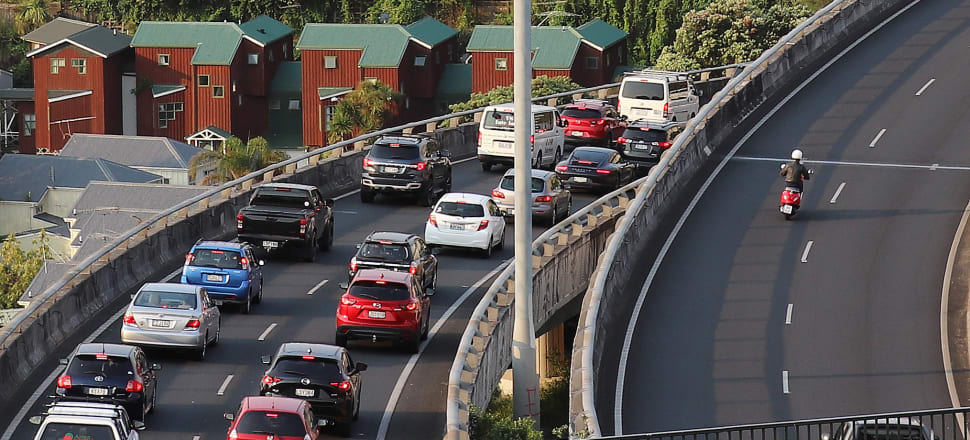
An increase in Auckland Transport’s target for maximum deaths and serious injuries created councillor opposition to its new statement of intent
Targets for emissions and safety outcomes raised eyebrows among Auckland’s councillors this week as Auckland Transport presented its vision for the future.
New success measures for the agency were largely supported by the governing body as they voted through a new statement of intent vowing to champion the needs of Aucklanders.
READ MORE:
* Auckland Council's bid for more control over transport
* Auckland Transport wants to regain the trust of the city
But an increase in the target for death and serious injuries in the transport network from no more than 537 to 640 in the next year had some elected members pushing back.
Auckland Transport chief executive Dean Kimpton told councillors funding uncertainties had prompted a broad reset of success measures.
Manurewa-Papakura councillor Angela Dalton said she couldn’t support the statement of intent while it increased the target of maximum deaths or serious injuries.
"This is no reflection on Auckland Transport, this is a reflection on us and what we choose to invest in,” she said. “To have a target in there because funding has been reduced to say there will be an increase of no more than 110 people is not something I can support.”
Waitakere councillor Shane Henderson said he was “wrestling in his gut” over whether to support the statement of intent, but eventually voted against it due to the changes in safety measurement.
He said funding was not the full reason the measure was changing, as safety levels could be determined by policy and regulation.
“These are policy discussions, some of them are regulatory issues that council are lobbying government for... so it's not just money,” he said. “To revise down death and serious injury targets sends a really bad message to Aucklanders and I just cannot go along with that.”
He said every councillor would have dealt with road deaths in their ward, especially among cyclists and walkers.
“We've got to put a stake in the ground,” he said, adding there was a “horrible political rhetoric” around opposing things to improve safety for kids around schools.
But Manurewa-Papakura’s Daniel Newman, who supported the statement of intent, said nobody was trying to increase the number of road deaths and urged his fellow councillors to allow the document to go through uncontested.
“[This document] has been workshopped and workshopped and workshopped… I’m sorry that it doesn’t suit the narrative for some people. I don't think anybody voting for this statement of intent today is out there to drive up the rates of deaths and serious injuries, and if that's the narrative from someone I'd be disappointed.”
Others argued that despite the measure increasing, it was still a number lower than the actual amount of deaths and serious injuries. There were 669 deaths and serious injuries reported on Auckland roads in the year to July 2023 – an increase of more than a hundred on the year before.
“The target trajectory is calculated from that baseline result, and that is going down from the reality on the ground,” said transport committee chair and Albany councillor John Watson.
Despite the opposition, the document was carried 14 votes to six.
Emission reductions faced a similar situation, with the current target of 17 percent dipping to 15 percent in the 23/24 financial year. It will pick up from there again to 19 percent in 24/25 and 23 percent in 25/26.
Auckland Transport staff argued the indicators were a realistic assessment of their ability to do more, following hugely expensive storm recovery costs and an unprecedented budgetary squeeze.
The statement of intent said the reset safety target had been calculated from June 2023 figures with an aim of zero injuries and deaths by 2050.
That’s in line with the Government’s Road to Zero plan, which began in 2020 to incrementally reduce road deaths over the decade.
The Government’s draft policy statement on transport this week only made one mention of Road to Zero, however, and instead listed safety as a strategic priority.
It seems like a slight backing away from a plan that has proven difficult, with road tolls in 2022 returning right back to pre-pandemic levels.
University of Auckland’s Dr Timothy Welch specialises in transport and infrastructure.
He said the numbers in both Auckland Transport’s statement of intent and the Government’s policy statement could be construed as giving up on the challenge.
But is zero even a realistic goal?
Apparently so, at least for a city like Auckland. Cities like Oslo and Helsinki had zero fatalities on their roads in 2019, while Hoboken, New Jersey – in the car-loving United States – has had similar results.
“There are plenty of case studies around the world of cities where they have accomplished it,” Welch said. “But the way they do it isn't just by putting up road signs.”
This was best achieved by reducing the number of people behind the wheel of their own private vehicle.
“Speed is absolutely critical but we can't just put up speed limit signs,” he said. “It’s about reducing the amount people are driving – charging people to enter CBDs, increasing public transport.”







